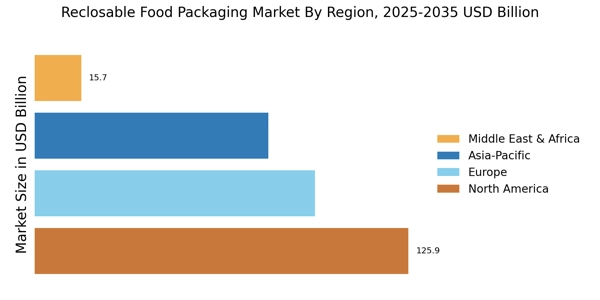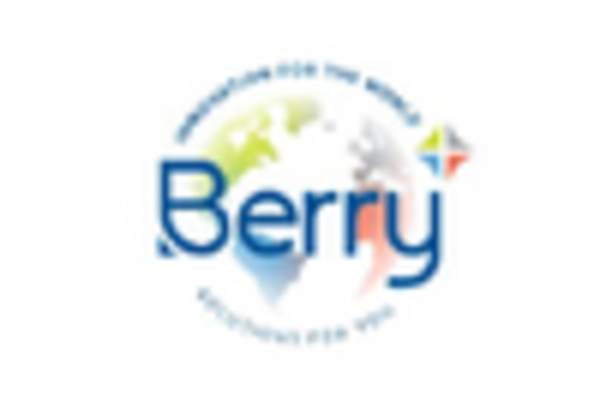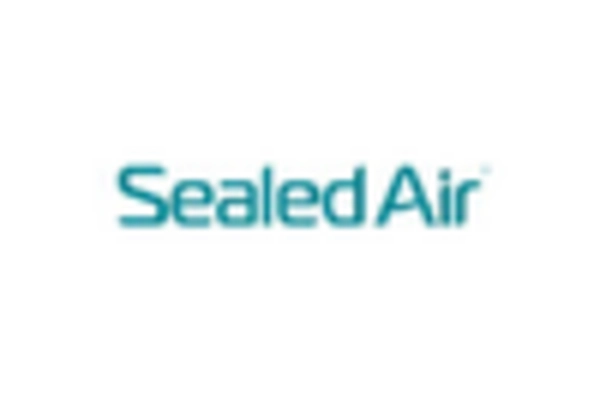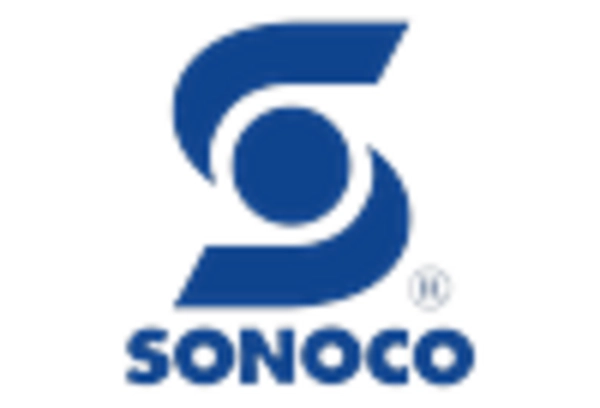Consumer Convenience
Consumer convenience is a driving force behind the growth of the Reclosable Food Packaging Market. As lifestyles become increasingly fast-paced, consumers are seeking packaging solutions that offer ease of use and functionality. Reclosable packaging provides the advantage of resealability, allowing consumers to store food products securely and maintain freshness over time. Industry expert's suggests that products with convenient packaging options are more likely to attract consumer attention and drive purchasing decisions. Additionally, the rise of e-commerce has further amplified the demand for reclosable packaging, as consumers expect products to arrive in intact and resealable conditions. This trend indicates that convenience-oriented packaging solutions are likely to dominate the Reclosable Food Packaging Market, as brands strive to meet the evolving preferences of their customers.
Regulatory Compliance
Regulatory compliance is a critical driver in the Reclosable Food Packaging Market. Governments and regulatory bodies are implementing stringent guidelines regarding food packaging materials and safety standards. These regulations often mandate the use of specific materials that are safe for food contact and environmentally friendly. As a result, manufacturers are compelled to innovate and adapt their packaging solutions to meet these evolving standards. Market analysis indicates that compliance with regulations not only ensures consumer safety but also enhances brand reputation. Companies that proactively address regulatory requirements are likely to gain a competitive edge in the Reclosable Food Packaging Market. This focus on compliance is expected to drive investment in research and development, leading to the creation of safer and more sustainable packaging solutions.
Health and Safety Concerns
Health and safety concerns are increasingly influencing the Reclosable Food Packaging Market. With rising awareness about food safety and hygiene, consumers are more inclined to choose packaging that ensures product integrity and minimizes contamination risks. Reclosable packaging solutions, which often feature tamper-evident seals and airtight closures, are perceived as safer options for food storage. Market data reveals that the demand for packaging that enhances food safety is on the rise, with consumers prioritizing products that offer clear labeling and information about ingredients. This heightened focus on health and safety is likely to propel the growth of the Reclosable Food Packaging Market, as manufacturers adapt their offerings to align with consumer expectations for safe and reliable food packaging.
Sustainability Initiatives
The Reclosable Food Packaging Market is increasingly influenced by sustainability initiatives. As consumers become more environmentally conscious, there is a growing demand for packaging solutions that minimize waste and utilize recyclable materials. This shift is evident in the rising adoption of biodegradable and compostable materials in reclosable packaging. According to recent data, the market for sustainable packaging is projected to grow at a compound annual growth rate of over 7% in the coming years. Companies are responding by innovating their product lines to include eco-friendly options, which not only meet consumer expectations but also comply with stringent regulations aimed at reducing plastic waste. This trend towards sustainability is likely to drive growth in the Reclosable Food Packaging Market, as brands seek to enhance their environmental credentials and appeal to a broader customer base.
Technological Advancements
Technological advancements play a pivotal role in shaping the Reclosable Food Packaging Market. Innovations in materials science and packaging technology have led to the development of more efficient and user-friendly reclosable solutions. For instance, advancements in adhesive technologies and zipper designs have improved the functionality and reliability of reclosable packaging. Market data indicates that the integration of smart packaging technologies, such as QR codes and freshness indicators, is gaining traction, enhancing consumer engagement and product traceability. These technological improvements not only enhance the user experience but also extend the shelf life of food products, thereby reducing food waste. As manufacturers continue to invest in research and development, the Reclosable Food Packaging Market is expected to witness significant growth driven by these technological innovations.


















Leave a Comment